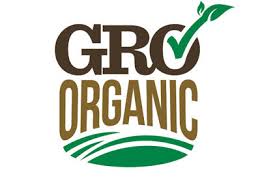Agriculture contributes to climate change through GHG emissions and soil carbon depletion
We need to think about agriculture when we talk about climate change, because about 40% of the world’s ice-free land is used for agriculture and up to 23% of human-caused greenhouse gas (GHG) emissions comes from conventional agricultural production*. At the same time, conventional agriculture has been depleting carbon at an alarming rate: over the last 1,200 years 133 billion metric tons of carbon have been lost worldwide in the top 2 meters of soil alone, and that rate keeps increasing every year. Increasing GHG emissions and the release of carbon from the soil into the atmosphere directly contributes to climate change and extreme weather events occurring across the globe.
Agriculture is affected by extreme weather associated with climate change
Climate change is causing both gradual and extreme changes in weather conditions like temperature, rainfall, and devastating storms. These changes influence the success of crops by causing stress to the crops during drought, flood, or extreme temperatures. Populations of beneficial biodiversity like pollinators and natural enemies of pests are also impacted, while all kinds of pests and pathogens also change with the weather, typically increasing with more heat and humidity. Farmers are faced with fluctuating extremes in nearly every growing condition which makes it challenging to produce reliable yields each year.
Farming practices can mitigate climate change by increasing soil carbon storage
While the situation may sound dire, this also means that we have a great opportunity to reduce the food system’s contribution to climate change by using farming practices that reduce GHG emissions and draw carbon back into the soil. These practices include reducing tillage, pesticide use, and reliance on synthetic fertilizer (ammonium nitrate). When carbon is stored in the ground for both short and long term, it not only helps mitigate climate change, it also improves the soil structure which:
- Reduces erosion
- Reduces compaction
- Improves aeration, filtration and water holding capacity
- Provides a reserve of essential nutrients for plants
- Supports soil organisms by providing a food source which in turn helps fight soil borne diseases and supports more above ground diversity
All of these benefits result in overall healthier soil which helps farmers adapt to climate change and increases crop yields.
* The global estimate of total anthropogenic greenhouse gas emissions of 23% (12.0 ± 2.9 GtCO2eq yr–1) is sourced from the IPCC Special Report on climate change, desertification, land degradation, sustainable land management, food security, and greenhouse gas fluxes in terrestrial ecosystems. It includes Agriculture, Forestry and Other Land Use (AFOLU). Without incorporating land-use changes or deforestation associated with agriculture, direct estimates within the United States of greenhouse gas emissions from agriculture are around 10% of total U.S. greenhouse gas emissions.




